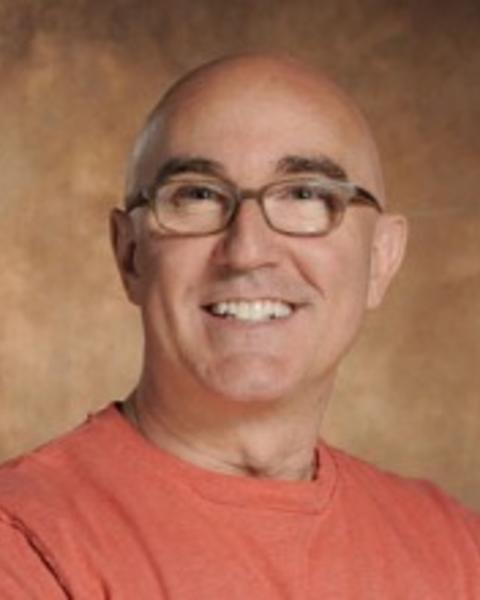Editor's Note:
In the Dialogue with Scientists series, National Business Daily (NBD) examines how the frontiers of discovery are shifting in the wake of the 2025 Nobel Prizes. From molecular design to life’s origins, the conversations with the pioneering minds reveal how modern science advances—not by certainty, but by curiosity and doubt.
Stuart L. Schreiber, Ph.D.—Founding Scientist at Arena BioWorks, Morris Loeb Research Professor at Harvard University, and Founding Core Member Emeritus of the Broad Institute—is a pioneer in the field of chemical biology.
His work has fundamentally changed our understanding of life's processes and led to the creation of transformative medicines, including those for cystic fibrosis and cancer.
National Business Daily (NBD) had an exclusive interview with Dr. Schreiber about his revolutionary approach to drug discovery, from using small molecules to "talk" to cells to his groundbreaking work on molecular glues.

Stuart L. Schreiber
What is Chemical Biology? An Orchestra Analogy
NBD: Your field is called chemical biology. Could you explain what that is, and perhaps use an analogy to help our readers understand how you use molecules to "talk" to and understand what’s happening inside a living cell?
Dr. Schreiber: As its name implies, chemical biology brought the atomic and molecular level understanding of chemistry to the questions that biologists were asking about how biological systems worked.
For example, how does information on the outside of living cells reach through two membranes to the inner chamber where the DNA is stored? Specific genes need to be turned on and off in response to external information, such as a bacterial infection or instructions to develop into a skin cell or a liver cell. Before chemical biology came along, this was not well understood at all.
If you think of cells as orchestras, then we were trying to decipher the sheet music by listening to the songs, while largely using chemistry to repair or silence instruments that were playing the wrong notes (in disease states). Chemical biologists had a deep understanding of chemical principles and a desire to apply them to the complexity of the cell. They climbed up onto the concert’s stage, poking around at the musicians to see what would happen.
They would tune one instrument differently or put guitar strings on a violin to see what would happen to the song, or show that they could start certain songs just by putting specific musicians in close proximity. Unlike the biochemists who worked on isolated instruments backstage to see how they worked, the chemical biologists tinkered with the instruments while they were playing with the rest of the orchestra!
The chemical probes they used to do this also seized on an opportunity presented by another great advance—molecular biology. The ability to cut and paste DNA created opportunities to use these probes in even more creative ways to make precise changes in complex systems that began to address the unanswered questions of biology.
Molecular Glues, Proximity, and the Discovery of mTOR
NBD: You're famous for your "probes"—small molecules that help you explore biology. Could you give a simple example of how one of these probes led to a breakthrough that is now helping patients?
Dr. Schreiber: When we came to understand that certain immunosuppressant natural products were acting as molecular glues, we saw their potential for probing cellular function.
We used them to show that nearly all of the processes in the cell that had been black boxes up until then—how messages got from the outside of the cell to the DNA in the nucleus, how genes were turned on and off, and more—are driven by proximity.
These probes, which we called bifunctional molecules, or chemical inducers of proximity, were the blueprints for PROTACs, popularized bifunctional compounds that lead to degradation of cellular targets. But the real power of molecular glues goes beyond proximity to cooperativity—their ability to dramatically enhance the affinity of one protein for another.
The combination of proximity and cooperativity is benefitting patients with multiple myeloma through drugs like thalidomide, lenalidomide, and pomalidomide that drive the degradation of cancer-causing proteins.
NBD: You discovered the mTOR protein, which is now a major target for drugs. How did that discovery change our understanding of diseases like cancer, and how does that translate into new therapies?
Dr. Schreiber: Before the discovery of mTOR, cancer was generally thought of simply as uncontrolled cell division. mTOR uncovered roles for cell growth and metabolism in cancer and therefore revealed many more targets beyond the cell cycle for therapeutic intervention.
The same molecule that led us to discover mTOR—rapamycin, which is also a molecular glue—also turns out to be a potent anti-cancer drug that starves cancer cells of the beneficial features of nutrients that are needed to grow and survive.

Photo/VCG
From Academic Discovery to Transformative Medicines
NBD: The concept of "molecular glues" is fascinating. Can you explain in simple terms what these are and how they're being used to develop a whole new class of drugs?
Dr. Schreiber: As alluded to above, molecular glues have the ability to increase the affinity of one protein for another, like Cupid’s arrow, so that two proteins that wouldn’t have ever interacted before are suddenly "glued" together.
The ability to give proteins new functions and different interacting partners has enormous potential to address unmet medical needs. This new way of thinking has helped the field move beyond the idea that a drug must simply block some unwanted function. This gluing event might bring together different domains of the same protein, stabilizing it or giving it a new function.
It can correct structural defects as in Vertex's FDA-approved Trikafta that is completely changing and extending the lives of cystic fibrosis patients. Molecular glues could confer tissue specificity by turning a tissue-restricted protein into part of the medicine, thus reducing unwanted toxicity. We have developed methods to look specifically for molecular glues with cooperativity and believe this class of drugs will be transformative.
NBD: You've co-founded successful companies like Vertex Pharmaceuticals. How do you decide when a scientific discovery in the lab is ready to be turned into a commercial venture? What does that journey look like?
Dr. Schreiber: In the case of Vertex, I had no idea in 1989 that what I was doing had commercial potential until a venture capitalist named Kevin Kinsella showed up in my office and wanted to start a company with me. That company became Vertex.
Now that I have been involved in starting 14 companies, I know that the decision depends on many factors, including the current funding climate for biotech, which goes through natural cycles, and evidence that drug candidates work as expected in animal models.
This is changing, as many new models for drug discovery are being explored, and as the field increasingly shifts to focusing on human biology over curing diseases in animals that would never get those diseases naturally.
NBD: Given your work at both Harvard and the Broad Institute, what is the value of having collaborations between academia and industry? What can they achieve together that they can't achieve alone?
Dr. Schreiber: In academia, scientists can ask questions with no immediate commercial value as long as the answers might benefit society. Since some of the greatest technological and biomedical advances can be traced back to discoveries with no immediate purpose, this kind of inquiry is invaluable.
Industry has the resources and know-how in development, scaling, and commercialization to turn discoveries into medicine. The value of collaboration is in closing the gap between these activities to reduce inefficiencies and so that experiments done in academia can be planned in a way that is conscious of the ultimate goal of creating medicines that work in humans.
NBD: You've received the prestigious Wolf Prize in Chemistry for your work. For a non-scientist, what makes this award so special, and what does it mean to you personally?
Dr. Schreiber: Awards are, of course, a gratifying recognition of the often-grueling work that scientific discovery requires, but for me, a much more meaningful legacy will be to have made a difference in the lives of patients.
The New Frontier: Tackling "Undruggable" Targets
NBD: In the business of drug discovery, there are often setbacks and failures. How do you maintain the motivation and perseverance to keep going when a promising lead doesn't pan out?
Dr. Schreiber: Scientists learn very early in their training that failure is a constant companion. When my trainees come to me, upset about failure, I help them see the big picture. As long as we are doing good science, even unexpected results give us valuable information. We are getting closer to the truth.
NBD: You've developed a new method called Diversity-Oriented Synthesis (DOS). In layman's terms, why is it so important to have a wide variety of molecules when you're searching for a new drug?
Dr. Schreiber: Many of our most powerful medicines have come from Nature, such as the immunosuppressants cyclosporin and FK506 and anti-cancer compounds like rapamycin and taxol. These molecules had the benefit of billions of years of evolution, and what they share are complex 3-dimensional architectures and a wide variety of diverse chemical functions.
I envisioned DOS to emulate Nature when I realized that while our chemical libraries of potential drugs were getting larger and larger, our success wasn’t scaling with the increased numbers. I realized that they were mostly simple, flat molecules with limited variety. With DOS, we began to see promising molecules addressing difficult global problems like malaria and tuberculosis.
NBD: Looking ahead, what do you see as the next major challenge or frontier in using small molecules to solve big problems in human health?
Dr. Schreiber: The frontier for small molecules is looking beyond the pockets of space in proteins that the field has exhaustively pursued. Proteins without these easy pockets to fill with small molecules had long been considered “undruggable” but are now being targeted with small molecules like molecular glues, which recruit other proteins to become part of the medicine. They’re also being targeted by molecules that may only stick weakly to the protein initially but then tether themselves to it irreversibly.


 川公网安备 51019002001991号
川公网安备 51019002001991号





